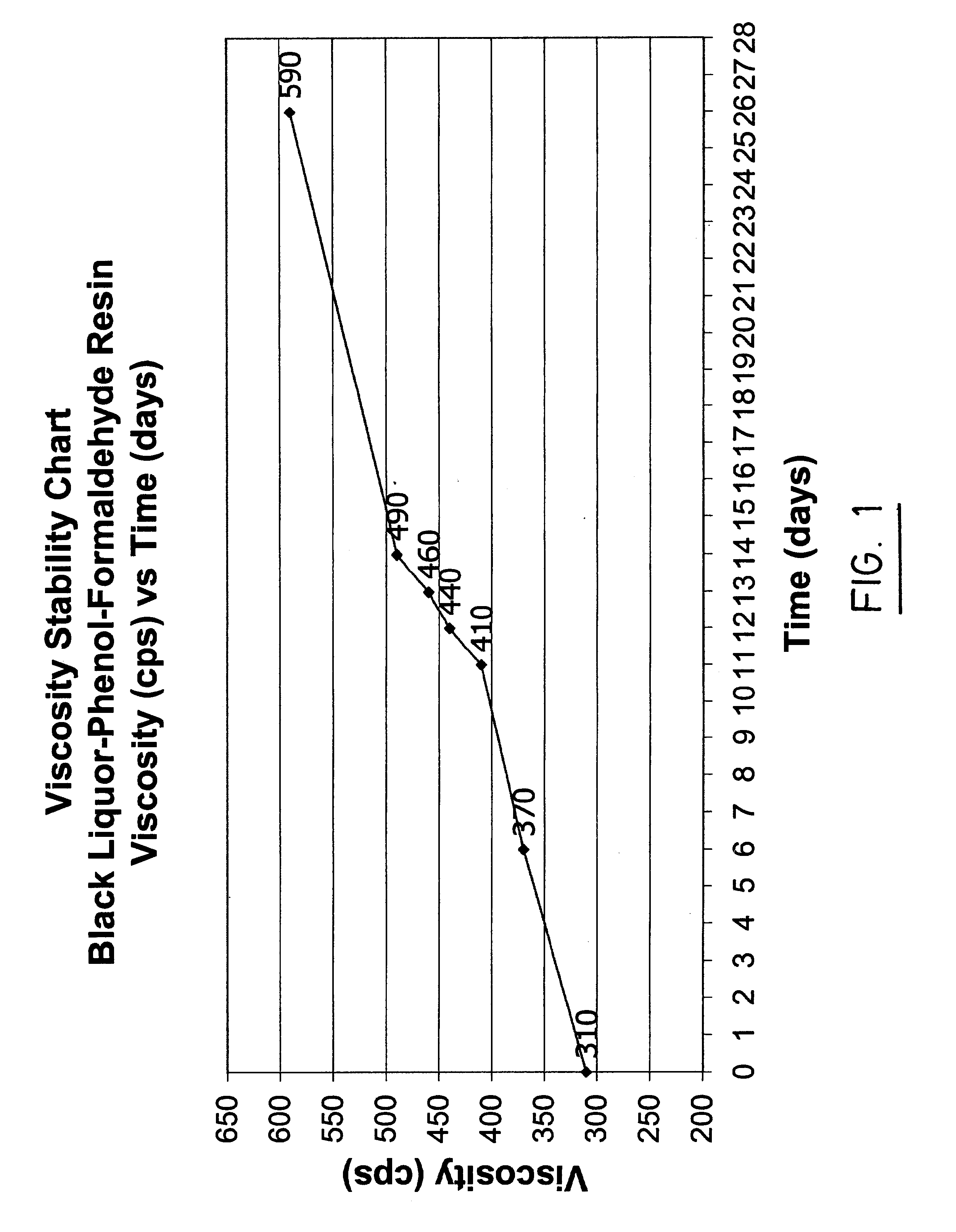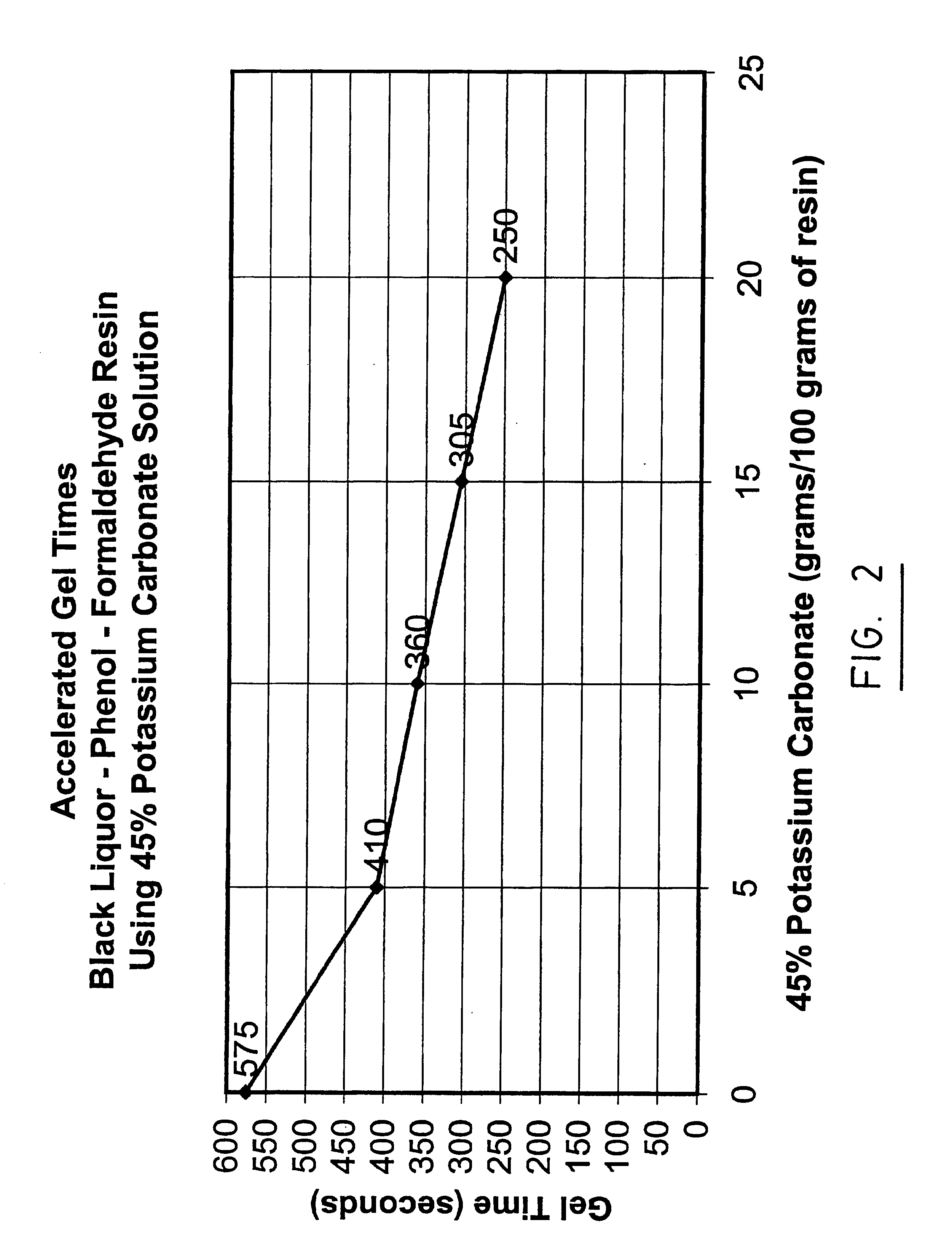Process for preparing a black liquor-phenol formaldehyde thermoset resin
a thermoset resin and black liquor technology, applied in the field of phenolformaldehyde (phenolic) thermoset resins, can solve the problems of poor high strength binder, economic disadvantage, and inability to meet the csa and astm standards for internal bond strength
- Summary
- Abstract
- Description
- Claims
- Application Information
AI Technical Summary
Benefits of technology
Problems solved by technology
Method used
Image
Examples
example 2
To 1000 grams of sodium carbonate black liquor, 274 grams of phenol were added together with 135 grams of a 45% potassium hydroxide solution. The mixture was heated to 92.degree. C. to 96.degree. C. and held there for 60 minutes. After 60 minutes, the mixture was cooled to 80.degree. C. and loaded with 127 grams of 95% paraformaldehyde while maintaining temperature of 75.degree. C. to 80.degree. C. The reaction mixture was held at 80.degree. C. to 85.degree. C. for 60 minutes and then cooled to 65.degree. C. At 65.degree. C., 136 g of 45% potassium hydroxide solution and then 150 g of 95% paraformaldehyde were added while keeping temperature between 75.degree. C. to 80.degree. C. The temperature was then increased to 80.degree. C. and maintained in a range of 80.degree. C. to 82.degree. C. at a viscosity of 1000 to 1200 cps for 90 minutes. Then, the resin was cooled to 65.degree. C. and 172 g of urea was added to it. Once urea was dissolved, the resin was cooled to 20.degree. C.
The ...
PUM
| Property | Measurement | Unit |
|---|---|---|
| mole ratio | aaaaa | aaaaa |
| mole ratio | aaaaa | aaaaa |
| mole ratios | aaaaa | aaaaa |
Abstract
Description
Claims
Application Information
 Login to View More
Login to View More - R&D
- Intellectual Property
- Life Sciences
- Materials
- Tech Scout
- Unparalleled Data Quality
- Higher Quality Content
- 60% Fewer Hallucinations
Browse by: Latest US Patents, China's latest patents, Technical Efficacy Thesaurus, Application Domain, Technology Topic, Popular Technical Reports.
© 2025 PatSnap. All rights reserved.Legal|Privacy policy|Modern Slavery Act Transparency Statement|Sitemap|About US| Contact US: help@patsnap.com


